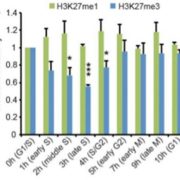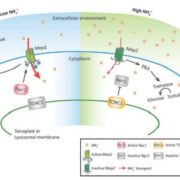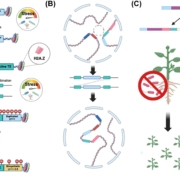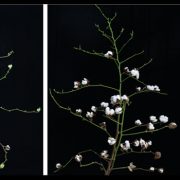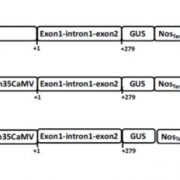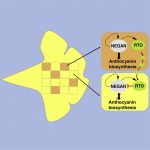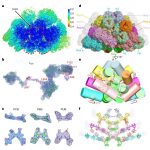Chimeric activators and repressors define HY5 activity and reveal a light-regulated feedback mechanism (Plant Cell)
 Plants take cues from the environment and decide when and how to regulate growth. When light is limiting, etiolated growth allows plants to reach the soil surface and gain access to light. After light perception, plants de-etiolate and go through a series of morphological and genetic changes. HY5 is one of the key transcription factors regulating de-etiolation and photomorphogenesis, although its function in transcription has been unclear. Burko et al. analyzed fusion proteins of HY5 with either a constitutive transcriptional activator (VP16) or repressor (SRDX) in Arabidopsis and tomato. Expressing HY5-VP16 and overexpressing HY5 rescue the long hypocotyl of hy5 seedlings whereas expressing HY5-SRDX exacerbates many hy5 mutant phenotypes. RNA-seq data show that in genes with high confidence HY5 binding sites (based on ChIP-seq), 79% are upregulated in HY5-VP16 and downregulated in HY5-SRDX, consistent with HY5 mostly working as a transcriptional activator during de-etiolation, and further identifying its direct targets. The study also demonstrates, “a molecular feedback loop via the COP1/SPA E3-ubiquitin ligase complex suggesting a mechanism which maintains low HY5 in the dark, primed for rapid accumulation to reprogram growth upon light exposure.” This approach also provide a promising strategy for future transcription factor research. (Summary by Yun-Ting Kao) Plant Cell 10.1105/tpc.19.00772
Plants take cues from the environment and decide when and how to regulate growth. When light is limiting, etiolated growth allows plants to reach the soil surface and gain access to light. After light perception, plants de-etiolate and go through a series of morphological and genetic changes. HY5 is one of the key transcription factors regulating de-etiolation and photomorphogenesis, although its function in transcription has been unclear. Burko et al. analyzed fusion proteins of HY5 with either a constitutive transcriptional activator (VP16) or repressor (SRDX) in Arabidopsis and tomato. Expressing HY5-VP16 and overexpressing HY5 rescue the long hypocotyl of hy5 seedlings whereas expressing HY5-SRDX exacerbates many hy5 mutant phenotypes. RNA-seq data show that in genes with high confidence HY5 binding sites (based on ChIP-seq), 79% are upregulated in HY5-VP16 and downregulated in HY5-SRDX, consistent with HY5 mostly working as a transcriptional activator during de-etiolation, and further identifying its direct targets. The study also demonstrates, “a molecular feedback loop via the COP1/SPA E3-ubiquitin ligase complex suggesting a mechanism which maintains low HY5 in the dark, primed for rapid accumulation to reprogram growth upon light exposure.” This approach also provide a promising strategy for future transcription factor research. (Summary by Yun-Ting Kao) Plant Cell 10.1105/tpc.19.00772
[altmetric doi=”10.1105/tpc.19.00772″ details=”right” float=”right”]


